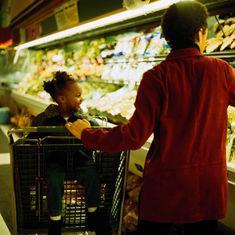
The latest TNS Worldpanel grocery market share figures show that trading-down continues to influence the market, with Waitrose struggling to tread water and Tesco experiencing growth in its value sector in favour of Finest products.
The figures, which cover 12 weeks ending January 25, also reflect the fact that Asda and Morrisons continue to benefit from their traditional cost-cutting image.
TNS Worldpanel monitors the household grocery purchasing habits of 25,000 demographically representative households in the UK.
The market has lifted by 6.4 per cent compared with the same period a year ago and since this period which includes festive spending, it shows that business remained firm - at least in the food sector.
Ed Garner, director of research at TNS Worldpanel, said: “As pure food price inflation remains above eight per cent, there are clear signs of trading down to lower price points, either within retailer (with retailers’ premium ranges under pressure and equivalent value ranges booming) or between retailers as this period’s figures continue to show.
“Thus it is no surprise that Waitrose finds that growth is hard to achieve (despite its traditional Christmas uplift), with sales virtually static year-on-year, resulting in a share decline from 3.9 per cent a year ago to 3.7 per cent now.
Asda and Morrisons have seen a 8.1 per cent and 9.7 per cent growth respectively as they continue with their central value-for-money policies in the recession. Iceland experienced strong Christmas growth to the tune of 14 per cent following its party food promotions.
Tesco slips back again with a 0.5 share point drop to 30.7 per cent as customers traded down, reflected by Aldi’s impressive 24.1 per cent growth.
Grocery price inflation has stalled and the figure for the 12 week-ending period January 25 2009 is 8.4 per cent as sterling’s decline continues to bite.
This figure is based on more than 75,000 identical products compared year-on-year in the proportions purchased by UK shoppers and therefore represents the most accurate figure available.



